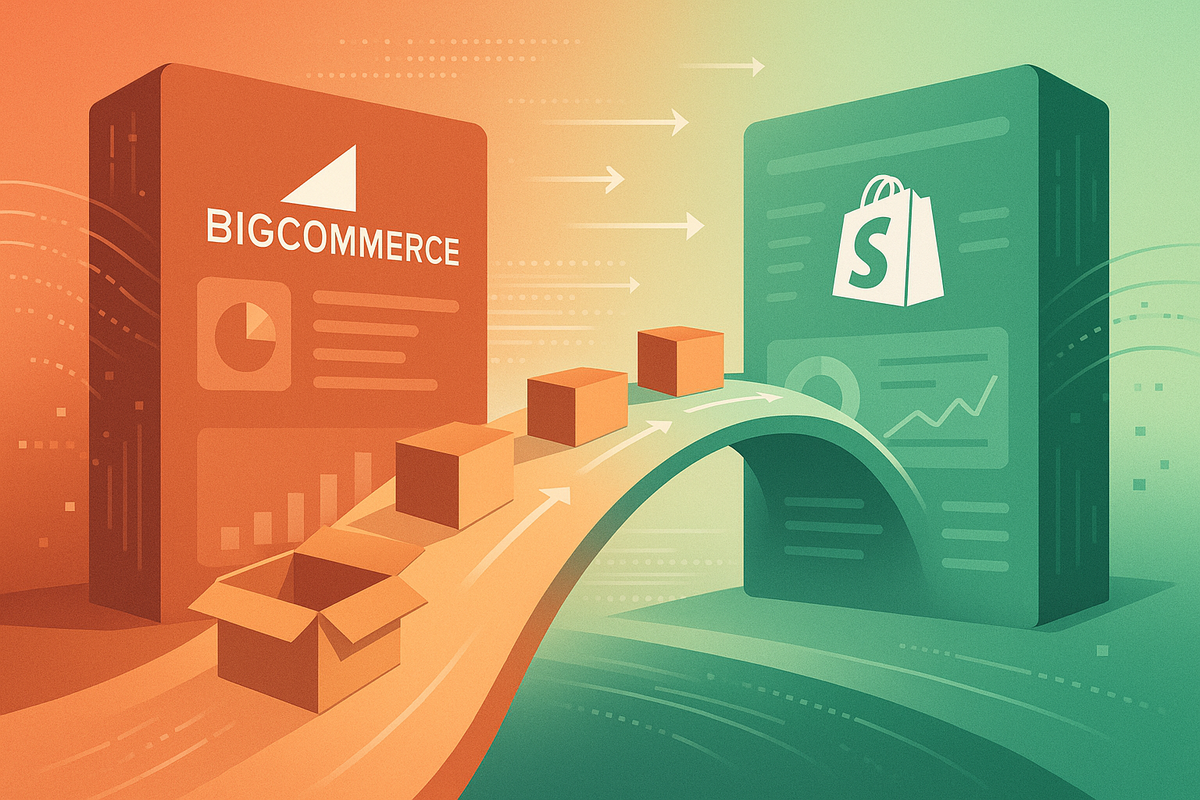In the fast-paced world of eCommerce, the platform you choose can define your growth trajectory. If you're on BigCommerce and eyeing Shopify's robust ecosystem—known for its superior conversions, speed, and tools like Shop Pay—making the switch might feel daunting. Yet, with the right approach, this migration can unlock new efficiencies and revenue streams without the headaches of data loss or downtime. Drawing from our experience at Arctic Grey, where we've guided numerous brands through similar journeys, this guide explores the ins and outs of a seamless BigCommerce to Shopify migration. Whether you're scaling up or seeking better integrations, understanding the process can empower you to make informed decisions that propel your business forward.
Understanding the BigCommerce to Shopify Migration
Migrating from BigCommerce to Shopify involves transferring key elements of your store—such as products, customer data, orders, and SEO settings—to Shopify's platform. This isn't just about moving data; it's about reimagining your store to leverage Shopify's strengths, like its 99.99% uptime and native features for B2C, B2B, and POS. The goal is a transition that maintains continuity while enhancing performance. For many merchants, this means addressing BigCommerce's reliance on third-party apps by tapping into Shopify's expansive ecosystem of over 10,000 native integrations, creating a more unified selling experience.
The Advantages of Making the Switch
Research shows Shopify often outperforms BigCommerce in key metrics, offering a compelling case for migration. Here's a breakdown of the core benefits, supported by independent studies and real-world data:
|
Benefit
|
Shopify Edge Over BigCommerce
|
Potential Impact
|
|---|---|---|
|
Conversion Rates
|
12% higher on average; Shop Pay boosts up to 50%
|
Increased sales from existing traffic, with over 150 million users opting for one-click checkouts
|
|
Site Speed
|
1.4x faster loading times
|
Reduced bounce rates and improved SEO rankings, leading to more organic visits
|
|
Total Cost of Ownership
|
31% lower TCO
|
Cost savings on maintenance, apps, and upgrades, freeing resources for growth
|
|
App Ecosystem
|
~10,000 apps vs. ~1,300
|
Easier customization and integrations, reducing fragmentation in operations
|
|
Market Scale
|
~4 million brands vs. ~41,000; 6:1 migration ratio in top sites
|
Access to a larger community, better tools, and proven scalability for mid-to-large businesses
|
These advantages aren't just numbers—they translate to tangible growth, as seen in brands that report smoother operations and higher revenue post-migration.
Step-by-Step: How a Seamless Migration Unfolds
A well-executed migration minimizes risks and maximizes opportunities. Based on proven methodologies, the process typically includes:
- Planning and Assessment: Evaluate your current BigCommerce setup, mapping out data like products, customers, and sales history to ensure nothing is overlooked.
- Data Transfer: Securely migrate essential elements, preserving SEO rankings and historical data for continuity.
- Design and Customization: Adapt your store's look and feel to Shopify's flexible themes, incorporating features like custom cart drawers or personalized experiences.
- Testing and Optimization: Rigorous QA to catch any issues, followed by A/B testing to refine performance.
- Launch and Support: Go live with minimal disruption, backed by ongoing monitoring to address any post-migration needs.
This structured approach, handled by experienced teams, turns what could be a complex project into a straightforward evolution of your store.
Real-World Insights from Successful Migrations
Hearing from those who've made the leap can illuminate the path. For instance, one CTO noted how the migration unlocked "immense knowledge of Shopify Plus and exceptional communication," leading to a partnership that felt like an extension of their team. Another brand praised the process for "creating exactly what we envisioned while constantly refining every detail," resulting in an engaging shopping experience that drove repeat business. Stories like these—from universities to fashion labels—highlight how a thoughtful migration not only resolves pain points but also reveals new avenues for innovation.
Why Expertise Matters in Your Migration Journey
Choosing the right partner can make all the difference, especially when navigating platform-specific nuances. Look for teams with a track record in Shopify Plus, awards for design and development, and a commitment to 100% client satisfaction. At Arctic Grey, our multi-award-winning approach—recognized for best-in-class website design and top developer status—focuses on integrity, timely delivery, and world-class service. It's about more than migration; it's about setting your store up for long-term success in a competitive landscape.
Looking Ahead: The Role of AI in Future-Proofing Your Store
As eCommerce evolves, AI tools are streamlining migrations with smarter data mapping and predictive optimizations. Integrating these during your switch can enhance personalization and analytics, keeping your Shopify store agile amid trends like hyper-personalized shopping.
If these insights resonate with your current challenges, exploring a personalized migration strategy could be the next step. For more details on seamless transitions from BigCommerce to Shopify, visit our migration page. Or, if you're ready to discuss how this could work for your brand, our team at Arctic Grey is here to chat—let's connect and chart a path forward.
About Arctic Grey: Specialists in Shopify builds, customizations, UX audits, and migrations from platforms like BigCommerce, Magento, WooCommerce, and more.




